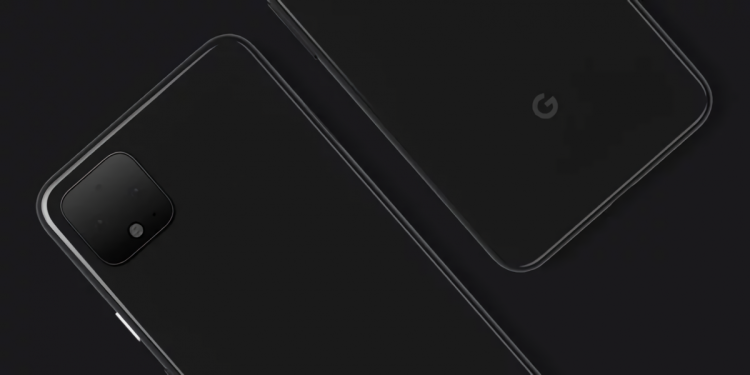testsetset
At an event in New York City this morning, Google took the wraps off the latest additions to its four-year-old Pixel smartphone portfolio: the Pixel 4 and Pixel 4 XL. They’re successors to the Pixel 3 and Pixel 3 XL, respectively, and there’s little to distinguish them from each other beyond variations in size, screen resolution, and battery life. But they share a host of upgrades on the inside and out, including dual rear cameras and gesture-detecting radar technology.
The Pixel 4 and Pixel 4 XL are available in up to three colors — depending on the region — Just Black, Clearly White, and Oh So Orange. Preorders start today, and the devices begin shipping on October 24.
Here’s the pricing:
- Pixel 4 64GB: $799
- Pixel 4 128GB: $899
- Pixel 4 XL 64GB: $899
- Pixel 4 XL 128GB: $999
A new design
The Pixel 4 and Pixel 4 XL usher in a new design language for the Pixel series, putting to rest its hallmark two-tone aesthetic. They opt instead for uniformly glossy glass and thick fingerprint-resistant outer bands, with curved corners and top and bottom bezels that are measurably narrower than those of their predecessors.
June 5th: The AI Audit in NYC
Join us next week in NYC to engage with top executive leaders, delving into strategies for auditing AI models to ensure fairness, optimal performance, and ethical compliance across diverse organizations. Secure your attendance for this exclusive invite-only event.
The Pixel 4 sports a smaller, 19:9 aspect ratio Full HD+ 19:9 OLED screen — 5.7 inches measured diagonally — compared with the Pixel 4 XL (6.3 inches). Predictably, it has a lower resolution versus the Pixel 4 XL’s Quad HD+ panel, which comes in at 3040 × 1440 pixels for a screen density of 537 pixels per inch. Those differences aside, both the Pixel 4 and Pixel 4 XL feature what Google is calling Smooth Display, which automatically boosts their screens’ refresh rate from 60Hz to 90Hz depending on the content. They also benefit from Ambient EQ, a carryover from Google’s Nest Hub that automatically optimizes the white balance for ambient lighting conditions.

Beneath the Pixel 4’s and Pixel 4 XL’s display is a loudspeaker and a USB-C port, and above it — near the top — are a proximity sensor, ambient light sensor, flood illuminator, infrared camera, and dot projector. Around back, a square-shaped camera module juts out from the top left, packing a Sony IMX 363 12.2-megapixel camera (f/1.7 aperture, 77-degree field of view) with laser autofocus and dual pixel phase detection and a Sony IMX 481 16-megapixel telephoto camera (f/2.4 aperture, 52-degree field of view) with spectral and flicker sensors. The latter is capable of up to 8 times zoom (2 times optical), thanks to a combination of optical zoom and Google’s Super Res Zoom technology, which uses a combination of AI and burst photos to improve the quality of zoomed-in images.
The Pixel 4 and Pixel 4 XL have a single Sony IMX 520 8-megapixel front-facing camera (f/2.0 aperture, 90-degree field of view), a departure from the Pixel 3 series’ dual-camera setup. Even absent a second sensor, however, the Pixel 4 and Pixel 4 XL can capture portrait mode selfies (shots that ever-so-slightly blur the background while maintaining lock focus on the foreground) that Google says are of superior quality to those generated by software alone, owing to depth data derived from both dual pixels and dual cameras.
Above: The Pixel 4 and 4 XL in “Oh So Orange.”
Rounding out the accoutrements are a colorful power button and a volume rocker on the handsets’ left side, as well as circular cutouts for noise-canceling microphones. Active Edge — touch-sensitive right and left bezels that trigger the Google Assistant when squeezed — makes a triumphant return on the Pixel 4 and Pixel 4 XL. Sadly, there’s no 3.5 audio jack in tow with either phone. .
Killer gestures — and cameras
Motion Sense
At Google’s I/O developer conference four years ago, the company’s Advanced Technology and Projects (ATAP) team unveiled Project Soli, tech that taps high-speed 60GHz radar sensors and algorithms to detect motion with sub-millimeter accuracy. The Pixel 4 and Pixel 4 XL are the first consumer devices on the market with built-in Soli technology, which Google has branded Motion Sense.
On its face, Motion Sense might seem like an incremental improvement over LG’s Air Motion — and similar in that it’s able to recognize gestures to skip songs, snooze alarms, and silence phone call. But Motion Sense can novelly recognize when someone reaches toward the Pixel 4 or Pixel 4 XL and switch on the screen autonomously, and it can detect when someone is looking at it directly. Plus, its “skip song” action is compatible with over 23 media apps out of the box, including Amazon Music, Apple Music, Google Play Music, Pandora, Shazam, Spotify, SiriusXM, and Deezer.

Google teamed up with The Pokémon Company to create Pokémon Wave Hello, a promotion for the upcoming Pokémon Sword and Shield that serves as an introduction to Motion Sense’s basic gestures. Swiping a finger above the Pixel 4’s or Pixel 4 XL’s screen prompts a reaction from one of five selectable Pokémon, while an upward swipe reveals a Pokédex-like dashboard with each one’s height, weight, type, and ability stats.
Another marquee experience is Headed South by Ustwo Studios, the development house behind the blockbuster series Monument Valley. In it, you use touch to nudge your character — a bird named Soli, a not-so-subtle nod to Project Soli — toward a non-player bird’s slipstream in order to catch up to it.
One thing to note is that Motion Sense isn’t supported in every region and country the Pixel 4 series will ship to. That’s because Google has to certify Soli sensors with regulatory authorities in order to legally transmit at the required frequencies. At launch, Motion Sense works in over 50 regions, including the U.S., Canada, France, Germany, Italy, Denmark, the Netherlands, Spain, Sweden, the U.K., and the United Arab Emirates, but absent from the list are Japan, Mexico, India, and New Zealand. To avoid potentially interfering with navigation systems and military equipment, it’ll disable itself when you enter unsupported regions.
Facial recognition
The Pixel 4 and Pixel 4 XL are the first in the Pixel series to ship with Google’s new and improved facial recognition feature, which can authenticate faces from any portrait or landscape angle. There’s a brief calibration step that involves making a rolling motion with your head as the phones’ sensors learn your facial geometry, but once that’s finished, unlocking the phones takes no more than a glance in the front-facing sensors’ direction.
The Pixel 4 series’ facial recognition flavor supports app sign-in, as well as payments, much like Apple’s Face ID. Google Play Store transactions can be authorized with a quick face scan, as well as in-app and web purchases through Google Pay. But that’s at your own risk — Google notes that the tech could be fooled by someone who looks a lot like the phone’s owner (e.g., an identical sibling).
Cameras
The Pixel 3’s and Pixel 3 XL’s cameras are regarded as some of the best on the market, and the Pixel 4 and Pixel 4 XL appear poised to maintain pole position. It’s not so much the sensors that stand out from the crowd, but the computational photography features with which they’re imbued.
On the videography side, there’s Audio Zoom, which uses the Pixel 4 and Pixel 4 XL’s microphones to detect the loudest source of audio within the frame of view and zoom in on it. And there’s Frequent Faces, which focuses on people you often photograph.
Both the Pixel 4 and Pixel 4 XL max out at 4K resolution, up to 30 frames per second.
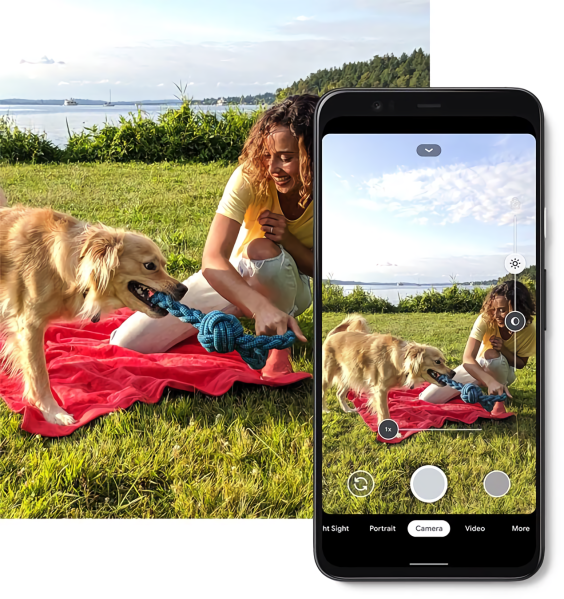
Above: The Pixel 4 series’ camera UI.
Night Sight uses AI to boost the brightness of flash-free and ultra-dark images. It launched with the Pixel 3, but the Pixel 4 series’ incarnation boasts improved dynamic range and color, thanks to support for longer exposure times — up to around 16 seconds. Additionally, it adds a new focus option — Infinity — that slots alongside the existing Near, Autofocus, and Far features. Entirely new is an astrophotography mode that enhances the contrast of the night sky to boost star visibility, albeit only when the Pixel 4 or Pixel 4 XL is held perfectly still or mounted on a tripod. (Google says the mode will come to the Pixel 3 and Pixel 3a series in a camera app update.)
Photographers will no doubt appreciate the Pixel 4 series’ burst shot mode, which captures 10 high-quality photos, along with high-resolution video, and the new dual exposure controls that afford granular control over scene brightness and shadows. Another nifty tool — Social Share — surfaces commonly used social media apps, like Messages, Snapchat, and Instagram, with an upward swipe on thumbnails.
Above: Astrophotography with the Pixel 4 series.
Other Google Pixel 4 and Pixel 4 XL camera features of note are an autofocus mode that tracks subjects in view, eliminating the need to manually lock focus, and Playground, which takes advantage of Google’s AR Core framework in Android to animate superheros, stickers, and captions that interact with the physical world around you. Top Shot captures a burst frame before and after you tap the shutter button and uses on-device AI to pick the best shot — taking into account things like smiles, open eyes, and gazes. As for Photobooth, it taps machine learning to automatically capture the “best” pictures — e.g., when someone smiles, sticks out their tongue, makes a face, or winks.
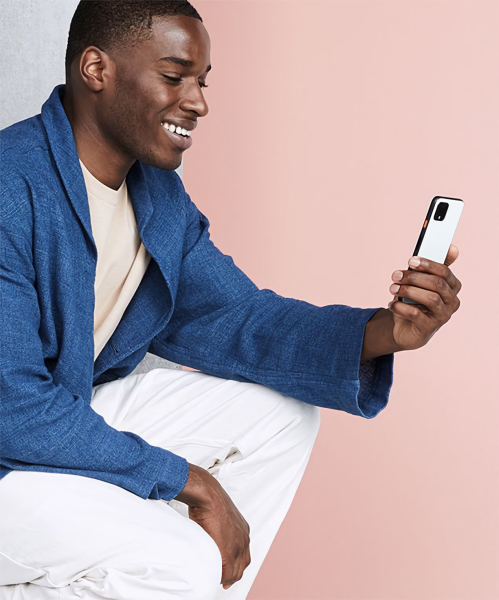
Google’s outstanding HDR+ mode is here too, of course. It captures a series of up to nine photographs at varying exposures — underexposed (dimly lit), overexposed (brightly lit), and in-between levels — and generates a composite, ensuring that details and highlights aren’t lost during post-processing. Live HDR+ approximates the effect in real time, in the viewfinder.
In addition, the Pixel 4 does machine learning-based white balance to capture true colors in difficult lighting.
Also worth highlighting is Google Lens, which works in real time on the Pixel 4 and Pixel 4 XL. The growing list of things Lens can recognize covers over 1 billion products from Google Shopping, as well as furniture, clothing, books, movies, music albums, video games, landmarks, points of interest, notable buildings, Wi-Fi network names and passwords, flowers, pets, beverages, and celebrities. It’s also able to surface stylistically similar outfits and home decor and to translate words in foreign languages printed on signage or menus. But perhaps most useful of all, Lens can scan documents and extract phone numbers, dates, and addresses from business cards before automatically adding them to the contacts list of your choice.
Powerful hardware
The Pixel 4 and Pixel 4 XL are no less well-endowed under the hood than they are above glass.
Both pack Qualcomm’s Snapdragon 855 system-on-chip, the same silicon inside Samsung’s Galaxy Note 9 and the recently announced LG V40. According to the chipmaker, the 7-nanometer eight-core chip can achieve up to 2Gbps cellular speeds courtesy of the embedded X24 LTE modem. It’s up to 45% faster overall, thanks to a 64-bit ARM Cortex design based on Qualcomm’s in-house Kryo 485 processor.
Four cores handle the heavy lifting — one prime core clocked at 2.84GHz and three performance cores at 2.42GHz — while four efficiency cores running at 1.8GHz handle less performance-intensive tasks. The Snapdragon 855 diffuses AI capabilities across multiple processing components (including a new tensor accelerator called Hexagon 690) for a total theoretical capacity of 7 trillion operations per second. Qualcomm is claiming an AI performance improvement of 3 times compared to its previous flagship chipset, the Snapdragon 845.
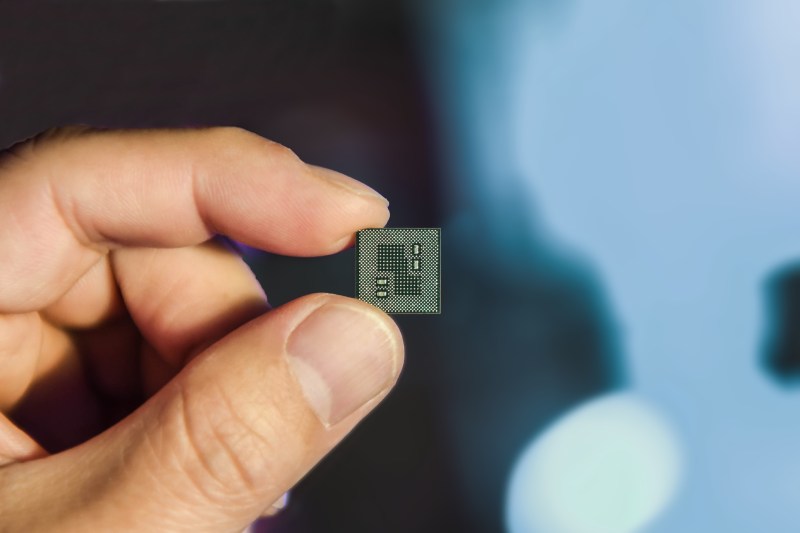
Meanwhile, the Snapdragon 855’s graphics chip — the Adreno 640 — is 20% faster than the Snapdragon 845’s Adreno 630, and it supports HDR (along with APIs like Vulkan 1.1) and custom algorithms designed to reduce dropped frames by over 90%. Additionally, it enables developers to use physically based rendering (PBR) to replicate the way light reflects off real-world materials.
Last, but not least, the Snapdragon 855 features a redesigned camera pipeline that moves computer vision features directly into the ISP. Dual 14-bit CV-ISPs are packed into the Spectra 380, each with hardware-based depth sensing that allows for video capture, object classification, and object segmentation in real time.
Suffice it to say, the Pixel 4 and Pixel 4 XL are a good deal faster than the outgoing models on paper, but it’s a mixed bag on the battery front. The Pixel 4 has a 2,800mAh battery, which clocks in at 115mAh smaller than the Pixel 3’s pack (2,915mAh), while the Pixel 4 XL’s battery is larger than the Pixel 3 XL’s, at 3,700mAh (up from 3,430mAh). The good news is that they support 11W fast charging up to 11W and wireless Qi charging accessories, including the Pixel Stand released last year.
Both handsets have 6GB of RAM (2GB more than the Pixel 3 and Pixel 3 XL) and pack both a next-generation Pixel Visual Core and Pixel Neural Core, Google-designed coprocessors that power-efficiently crunch millions to trillions of operations per second. The former accelerates the Pixel 4 series’ HDR+ feature, as well as Zero Shutter Lag (which eliminates the delay between triggering the phone shutter and the moment the photo is actually recorded) and Rapid and Accurate Image Super-Resolution (RAISR) technologies that use machine learning to produce high-quality versions of zoomed-in images. As for the latter, it processes and sends the face data it receives through sensors to the Titan M chip for authentication (more on that in a bit), and it speeds up tasks like always-on listening.
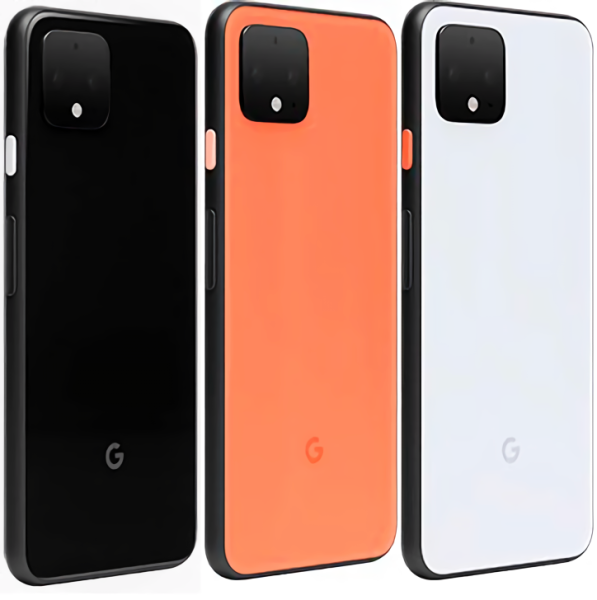
Above: The Pixel 4 and 4 XL in three colorways: Clearly White, Just Black, and Oh So Orange.
On the storage side, the Pixel 4 and Pixel 4 XL make do with 64GB or 128GB, depending on the model. An 802.11 a/b/g/n/ac chip supplies Wi-Fi connectivity, and a bevy of sensors — including an accelerometer, gyrometer, magnetometer, and barometer — orient the phones in three-dimensional space. (As in previous Pixel and Nexus devices, they’re managed by the Android Sensor Hub, a low-level system that powers sensor fusion and activity and gesture recognition.) There’s NFC onboard for contactless payment functionality (via Google Pay or the platform of your choice); Bluetooth 5.0 Low Energy for accessories pairing; and GPS and GLONASS for granular positioning.
The Pixel 4 and Pixel 4 XL have a regular SIM slot and an eSIM (Embedded SIM), and as with their predecessors can be provisioned to a network without the need to swap a physical SIM. In a first for the Pixel series, both phones can use the SIM and eSIM simultaneously in dual standby mode for calls, texts, or data.
Lastly, they sport a Google-engineered Titan M security chip with a purpose-built micro-controller and network controller chip. Google says the chip borrows from server security tech to protect sensitive data, like facial recognition info.
Live Caption, Pro Sessions, and more
The Pixel 4 and Pixel 4 XL ship running Android 10, the latest version of Google’s Android operating system. Google officially announced 10 in September, but we’ve compiled a list of highlights here in case you’re in need of a refresher.
Always a tap or voice command away is Google Assistant, Google’s intelligent voice assistant that can summon an Uber, pull up a podcast, perform a search for local businesses, and control thousands of smart home devices from hundreds of brands. It’s improved on the Pixel 4 and Pixel 4 XL, where its speech recognition and natural language understanding algorithms have shrunk in size from 100GB to less than 0.5GB and work offline.
Google Assistant now processes speech at “nearly zero latency” and is able to deliver answers up to 10 times faster than before.
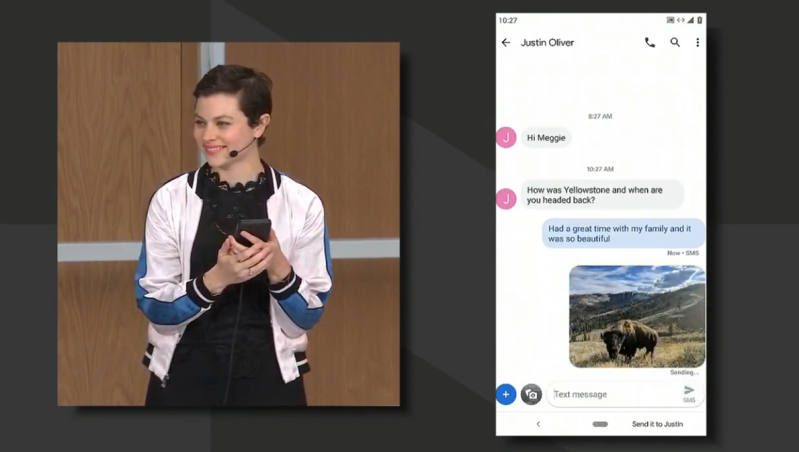
Above: Google Assistant in action.
Google Assistant on the Pixel 4 and Pixel 4 XL features a colorful overlay near the bottom of the screen that pops up when invoked, with recognized words and phrases shown floating in front of a blurred foreground. Support for Continued Conversations eliminates the need to repeat the “Hey Google” hotword after Google Assistant responds to a query, and the assistant now integrates more tightly with first-party apps like Google Maps and Photos. For instance, a question like “Where can I find sugar nearby?” prefills Map’s search bar with “eggs nearby,” while a request like “Show me photos from California” surfaces relevant pics from within Photos.
Like Pixel devices before them, the Pixel 4 and Pixel 4 XL ship with exclusive software features that aren’t available on other Android phones. One is Pro Sessions, or one-on-one support sessions offered through the Google One app in English in the U.S. and Canada. Another is Live Caption, which Google announced at I/O 2019 in May. With a tap of the Pixel 4 or Pixel 4 XL’s volume rocker and the corresponding on-screen shortcut, Live Caption (which will come to the Pixel 3 and 3a in December) provides real-time continuous English speech transcription in a moveable overlay for apps like YouTube, Google Podcasts, Google Photos, Amazon Prime Video, and Netflix (but not phone calls, voice calls, or video calls).
There’s also a new Recorder app, which features automatic transcription (in U.S. English) and audio search for words and phrases — neither of which require an internet connection. More useful still, Recorder automatically recogizes audio events like applause, birds, cats, dogs, laughter, music, roosters, speech, phones, and whistling.
Google’s Personal Safety app makes its debut with the Pixel 4 and Pixel 4 XL, and it lets you quickly share your location and a brief custom message describing your current situation with multiple contacts. Additionally, it’s able to automatically dial 911 if it detects that you’re involved in a car crash, using your location and readings from the handsets’ accelerometers and microphones — albeit only in the U.S. for now.
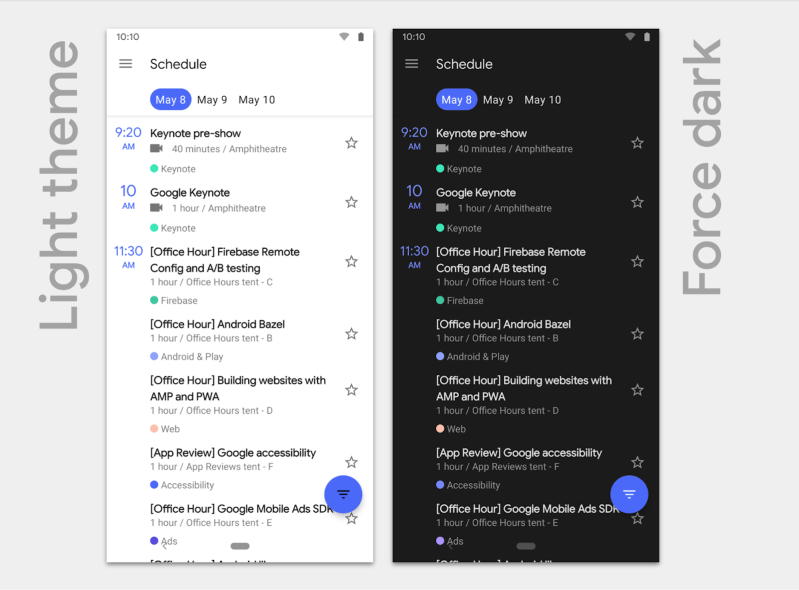
Above: Android 10’s Dark Mode, which can be enabled on the Pixel 4 and Pixel 4 XL.
Now Playing on the Pixel 4 leverages on-device machine learning to listen for millions of tunes in the background and surface metadata when it finds a match.
Rounding out the Pixel 4 series’ features list is Call Screen, which transcribes calls in real time so that you can decide whether to pick up, and Google Duplex, which dials restaurants to make reservations on your behalf. Lastly, buyers get 100GB on Google One for three months.
Accessories and availability
The Pixel 4 and Pixel 4 XL come with few extras. In select countries, including the U.K., carriers like Three are throwing in a free HP Chromebook 14 (a $290 value) for customers who preorder one of the new devices.
![]()
Both phones are compatible with and available through all major carriers in the U.S., including AT&T, C Spire, Cellcom, Google Fi, Charter’s Spectrum Mobile, Sprint, T-Mobile, U.S. Cellular, Verizon, Visible, and Comcast’s Xfinity Mobile. Alternatively, you can pick one up unlocked through the Google Store, Best Buy, Amazon, and other major brick-and-mortar retailers, plus Google’s Project Fi.
Alongside the Pixel 4 series, Google is offering knit fabric cases in a range of colors, including black, grey, and blue. They’re also available for preorder for around $40.
